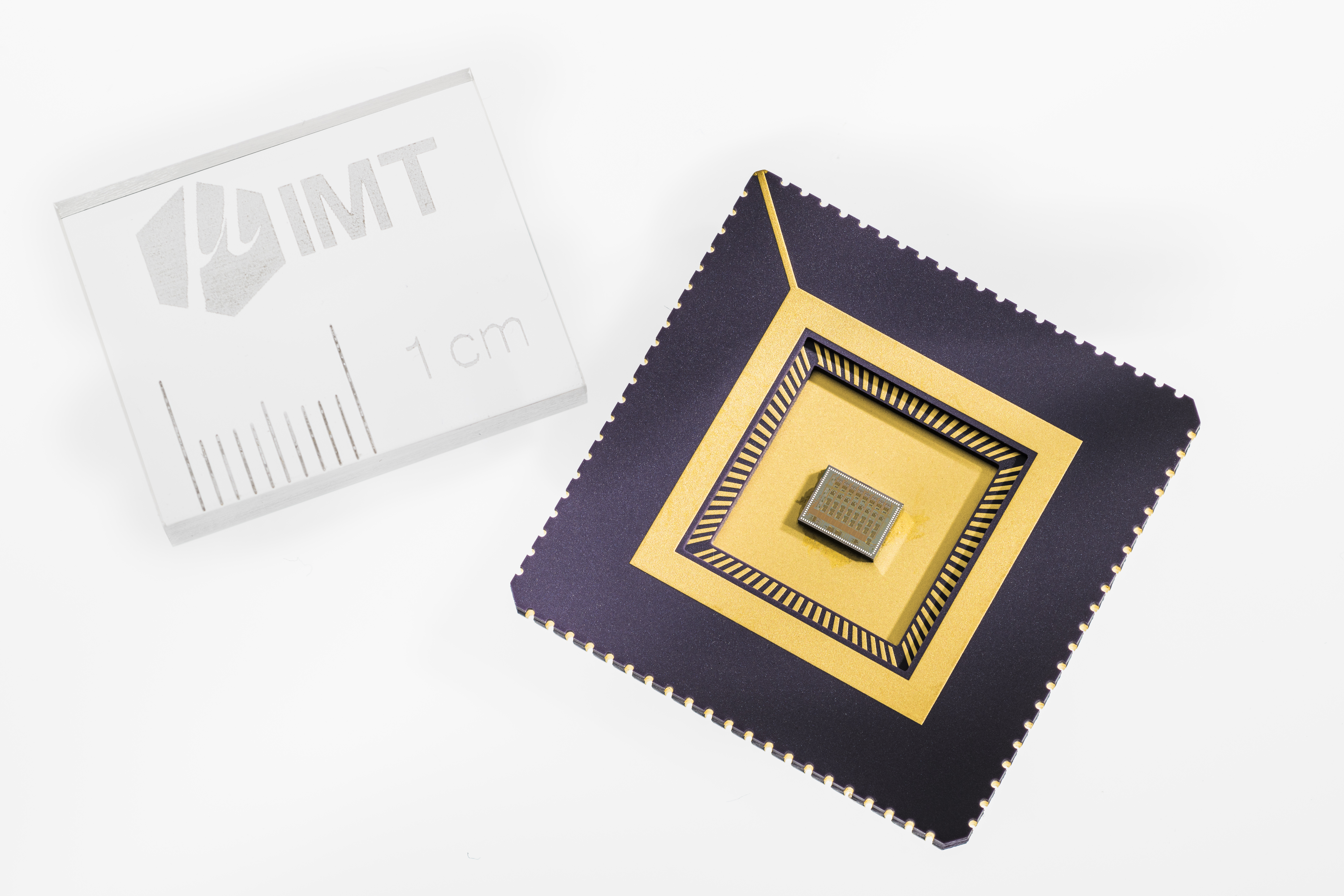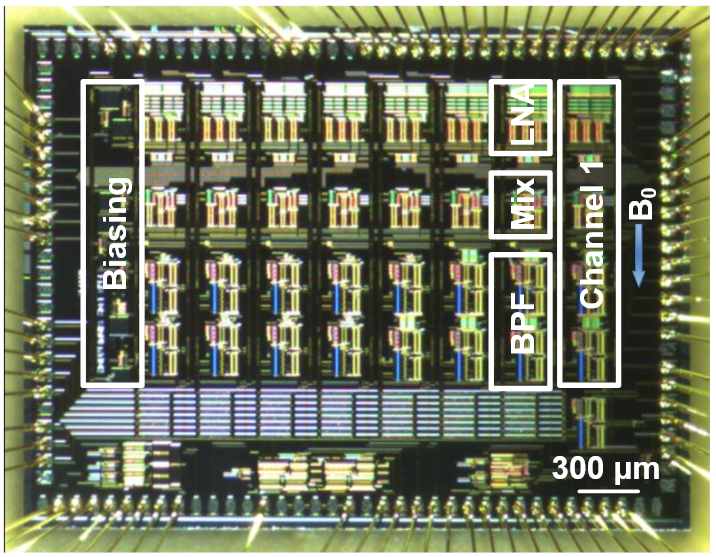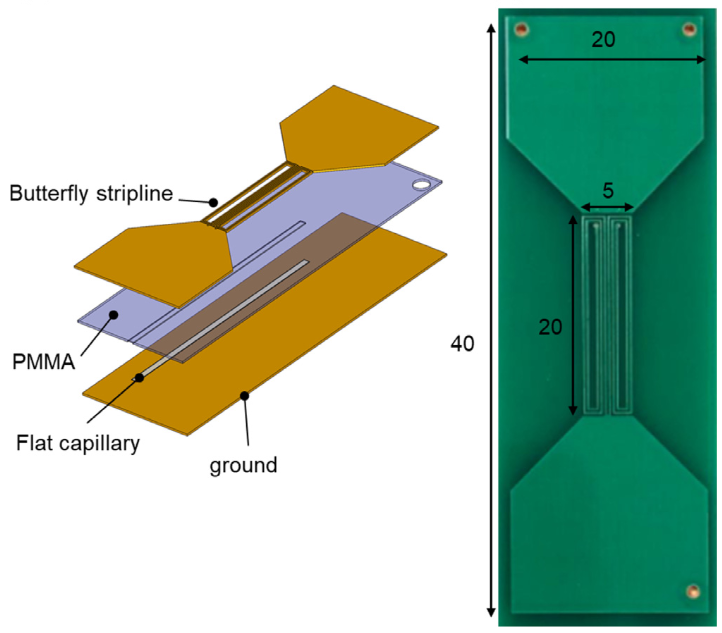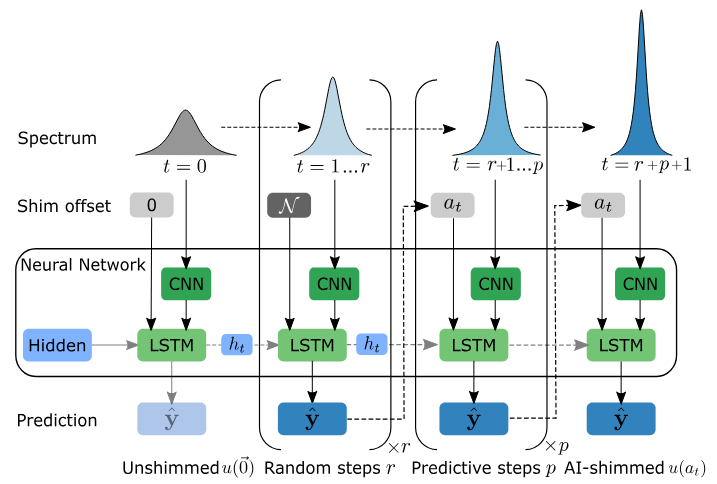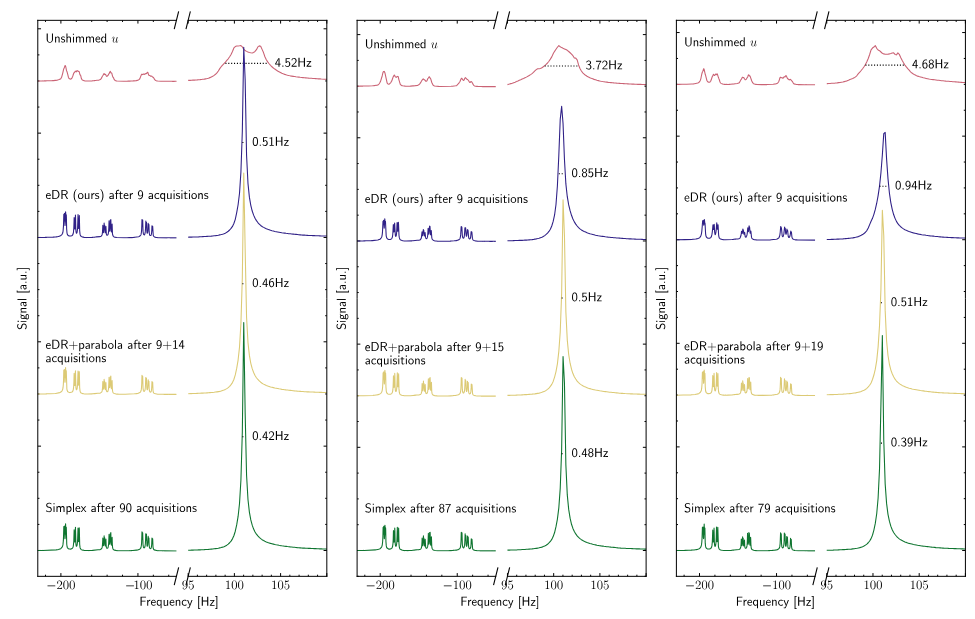NMR-Micro Imaging and Spectroscopy (MIS)
Dr. Mazin Jouda [Contact]
Welcome
Our research is dedicated to advancing magnetic resonance microspectroscopy and imaging through the development of innovative hardware solutions and microsystems. This encompasses designing high-sensitivity radio-frequency and microwave detectors, miniaturized shimming systems, CMOS-integrated RF electronics, and advanced signal processing circuits. Our developments aim to enable high-sensitivity, high-throughput multi-sample spectroscopy, higher-resolution micro-imaging, faster spectroscopy and imaging, and the creation of platforms for correlative spectroscopy and imaging applications.
Our research contributes to the research program 3: "Materials Systems Engineering" (MSE), Topic 5: "Materials Information Discovery" (subtopics 1 "Platforms for correlative, in-situ, and operando characterization" and 4 "Correlative data science") in the research field „Information“ as defined by the Helmholtz Association (link to MSE website). Ultimately, our research endeavors strive to advance the field of materials information discovery.

|
|
CMOS microelectronics for parallel Magnetic Resonance ImagingUsing arrays of detectors rather than a single detector in MRI provides several notable benefits, including improved imaging resolution, increased signal-to-noise ratio, shorter imaging times, and a larger field of view. However, these benefits come with challenges, such as higher costs, greater size, and increased system complexity. In this work, we introduce innovative approaches leveraging complementary metal-oxide-semiconductor (CMOS) microelectronic circuits to acquire, process, and multiplex MRI signals from detector arrays while keeping the CMOS chips remarkably compact. |
|
|
|
High-throughput NMR screeningNuclear Magnetic Resonance (NMR) spectroscopy is a highly versatile, non-invasive, and non-destructive analytical technique that provides exceptional insights into the molecular structure of samples with atomic-level resolution. Its wide-ranging applications span fields such as chemistry, physics, biology, material sciences, pharmaceuticals, and medicine. However, a significant limitation of NMR spectroscopy is its low throughput, as even the most advanced and costly commercial systems can process only one sample at a time. To address this challenge, our group is dedicated to developing innovative hardware solutions that enable high-throughput NMR spectroscopy, allowing the simultaneous analysis of multiple samples. |
|
|
|
AI-assisted NMR shimmingIn NMR spectroscopy, shimming, the process of homogenizing the magnetic field, is a crucial step preceding any experiment. Shimming is typically achieved by a set of DC-powered coils representing several terms of a spherical harmonics expansion that decomposes any inhomogeneous magnetic field. The shimming process is to find the optimum combination of the shim coils' currents corresponding to a certain sample, a process that is usually very time-consuming even when automated with advanced optimization algorithms. In our group, we managed to apply, for the first time, artificial intelligence to significantly speed up the shimming process, and consequently increase the throughput of NMR spectroscopy. |
|
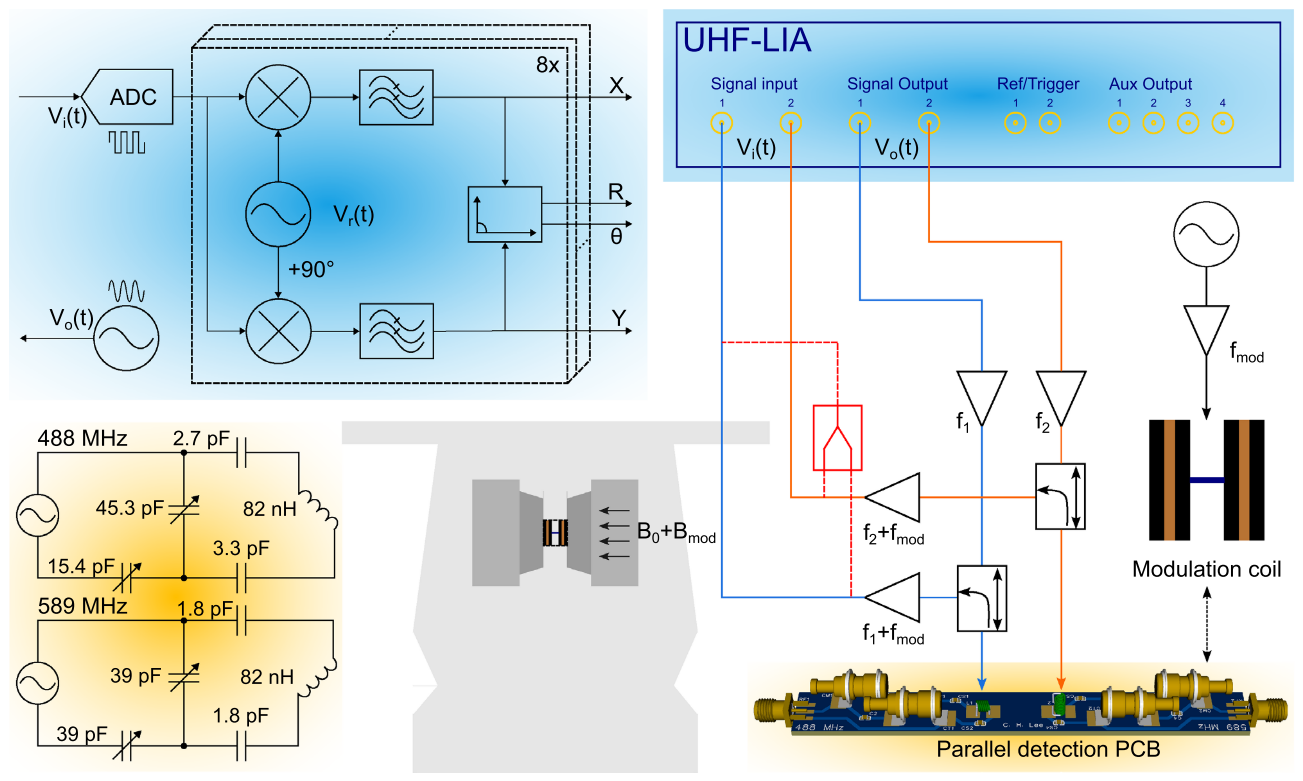 |
Parallel EPR spectroscopyUnlike NMR spectroscopy, which measures nuclear spins, electron paramagnetic resonance (EPR) spectroscopy focuses on electron spins to uncover insights into molecular structure and dynamics. EPR is extensively used to identify and quantify free radicals in chemical and biological systems, including reactive oxygen species (ROS) and reactive nitrogen species (RNS). Additionally, it plays a crucial role in detecting and analyzing paramagnetic defects in materials such as semiconductors, glasses, and ceramics. In our research group, we have pioneered a novel approach that enables simultaneous EPR spectroscopy on two samples, utilizing a hardware-efficient radiofrequency detection scheme. |
|
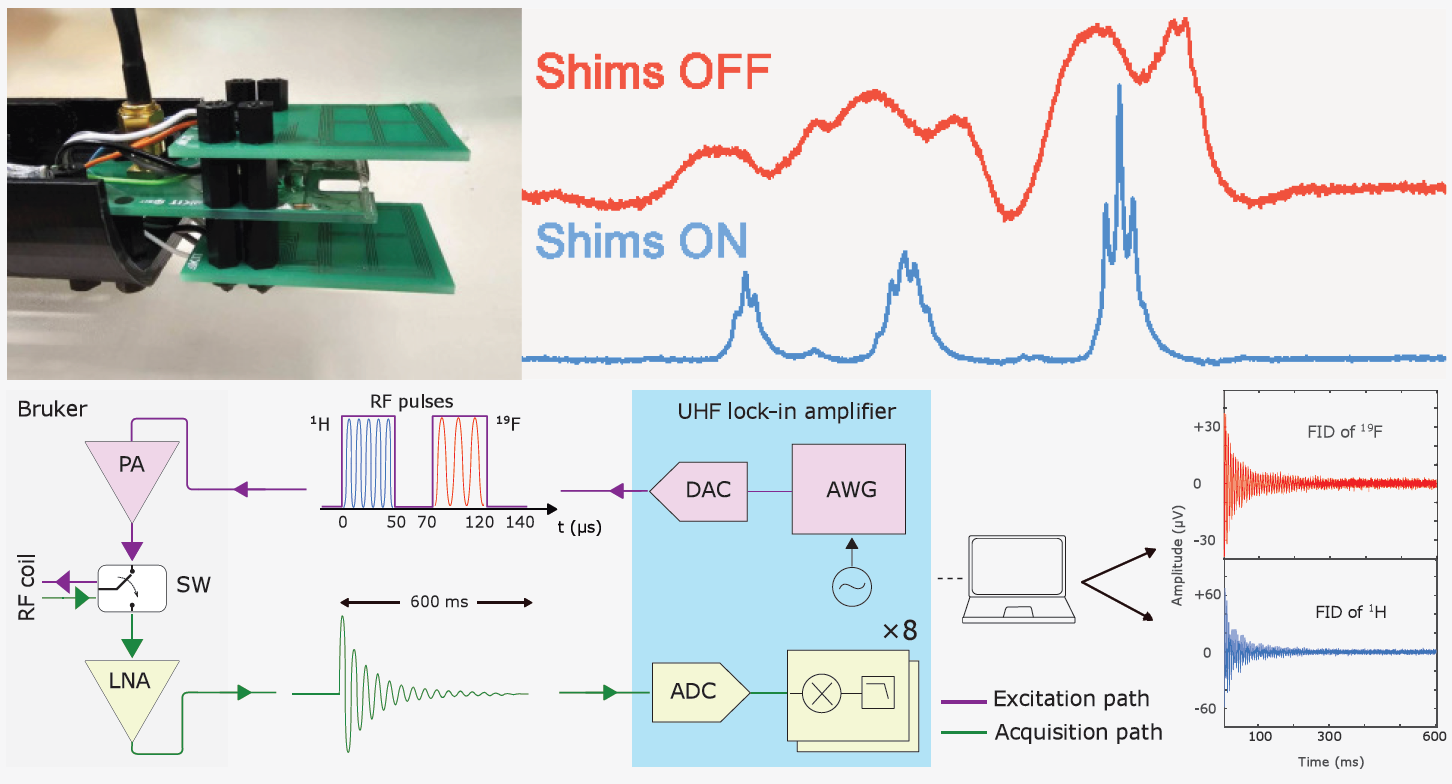 |
Smart NMR shimsWe introduce a smart localized shimset integrated with an RF microsolenoid, optimized as a single unit to achieve high-resolution NMR spectroscopy. This innovation marks a significant step toward parallel NMR spectroscopy, demonstrating the ability to improve NMR line width from 84 to 4 Hz in a 1.05 T preclinical MRI scanner with minimal power consumption (545 mW). Our work also presents a novel method for simultaneously acquiring multinuclear NMR spectra using a single RF channel. This approach allows us to use high-sensitivity NMR signals to correct for field drift, enhancing signal averaging even in permanent magnet NMR systems that are prone to temperature-dependent drift. We believe this advancement could have broad implications for the future of NMR and MRI technology. |
|
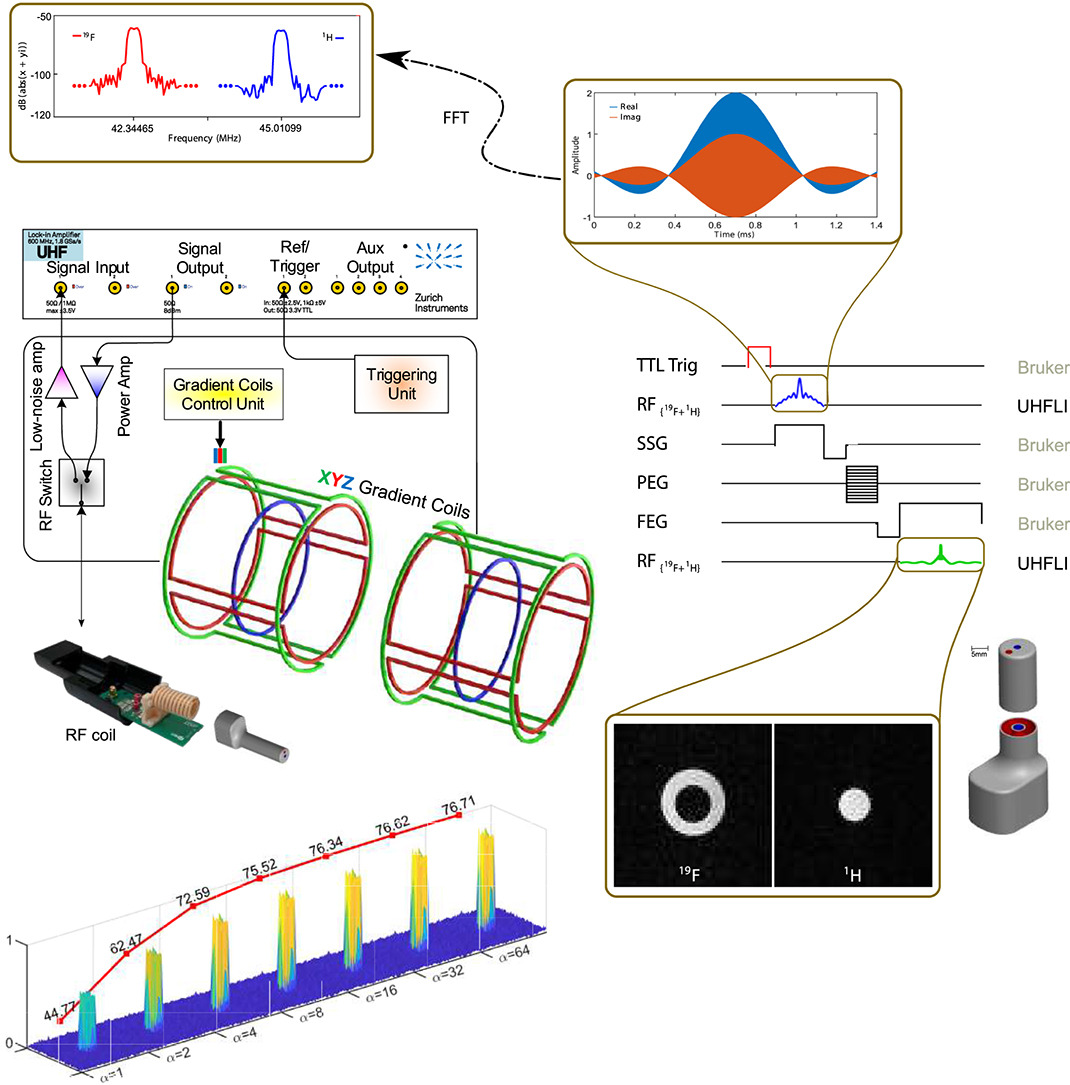 |
Hardware-efficient multinuclear MRIWe demonstrate the capability of performing simultaneous multinuclear magnetic resonance imaging using a single RF channel. This approach, which leverages digital lock-in detection and high-speed digital signal processing, offers great potential to significantly reduce the size, cost, and complexity of MRI systems while maintaining the quality of multinuclear MRI images. |
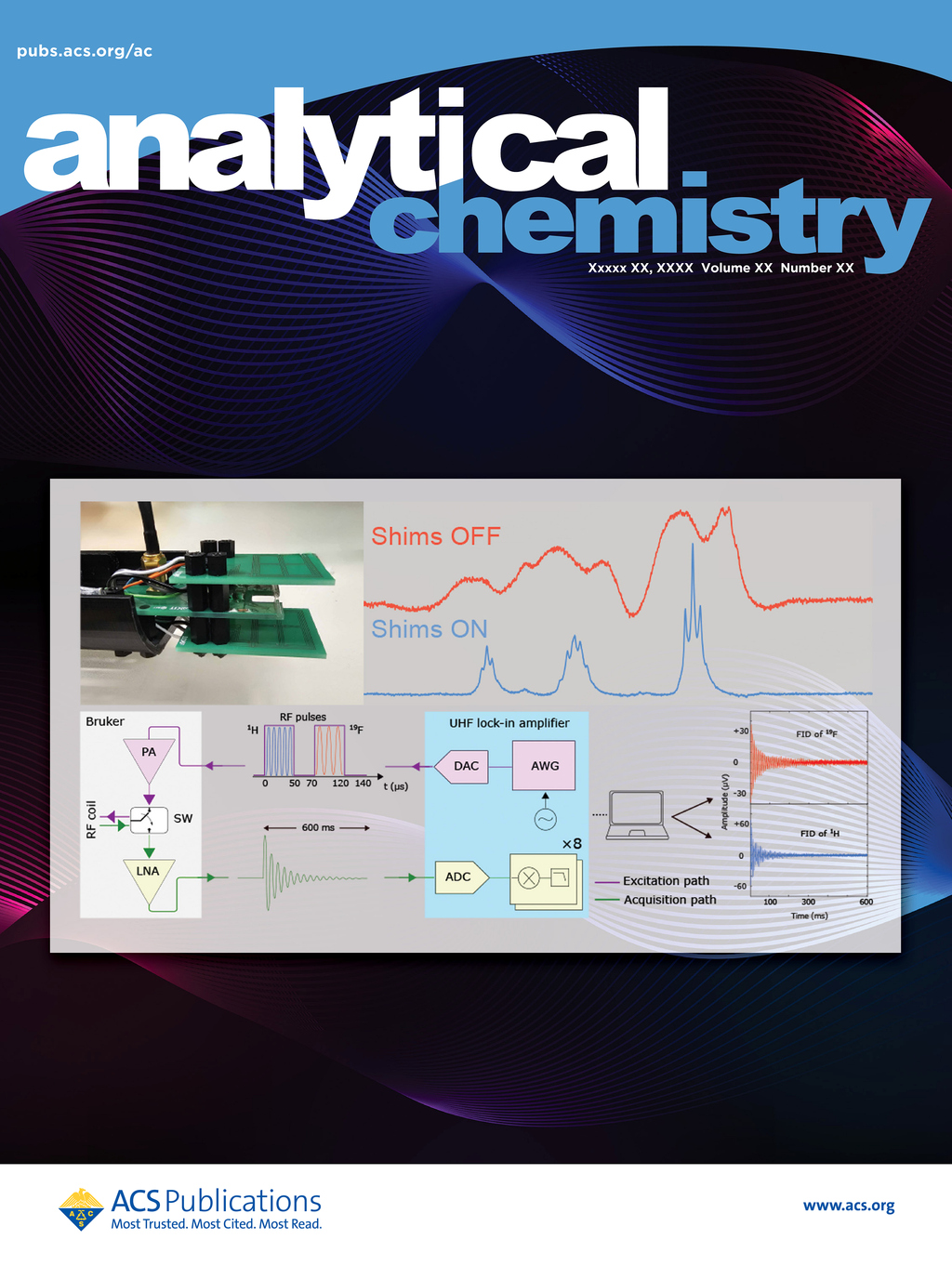
In our recent Analytical Chemistry paper, we introduce a smart localized shimset integrated with an RF microsolenoid, optimized as a single unit to achieve high-resolution NMR spectroscopy. This innovation marks a significant step toward parallel NMR spectroscopy, demonstrating the ability to improve NMR line width from 84 to 4 Hz in a 1.05 T preclinical MRI scanner with minimal power consumption (545 mW). Our work also presents a novel method for simultaneously acquiring multinuclear NMR spectra using a single RF channel. This approach allows us to use high-sensitivity NMR signals to correct for field drift, enhancing signal averaging even in permanent magnet NMR systems that are prone to temperature-dependent drift. We believe this advancement could have broad implications for the future of NMR and MRI technology.
Link to the article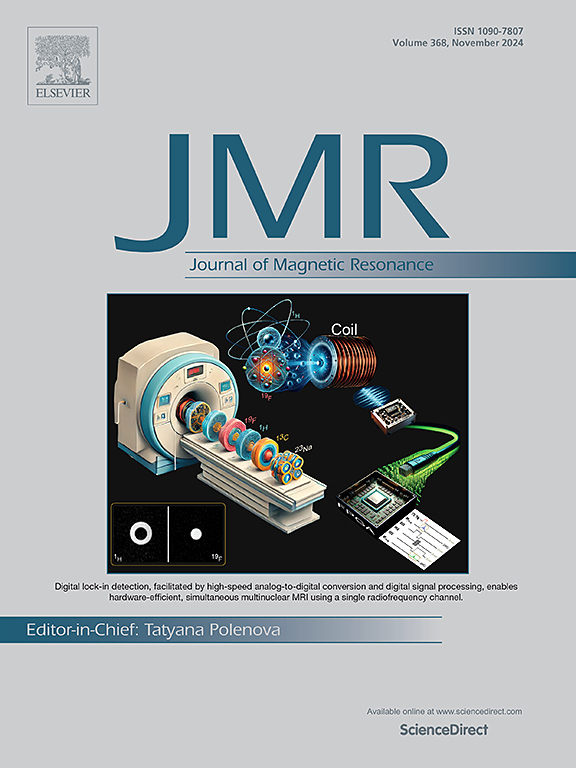
In our recent JMR paper, “Simultaneous multinuclear MRI via a single RF channel", we demonstrate the capability of performing simultaneous multinuclear magnetic resonance imaging using a single RF channel. This approach, which leverages digital lock-in detection and high-speed digital signal processing, offers great potential to significantly reduce the size, cost, and complexity of MRI systems while maintaining the quality of multinuclear MRI images.
Link to the article

